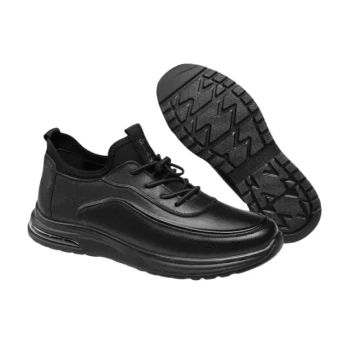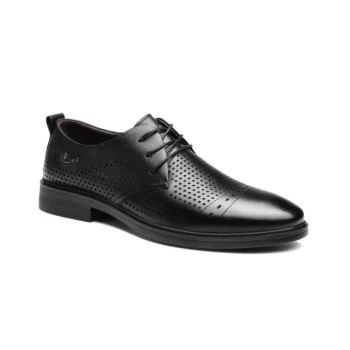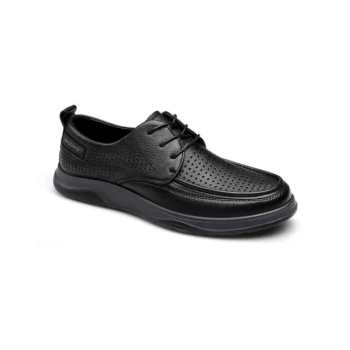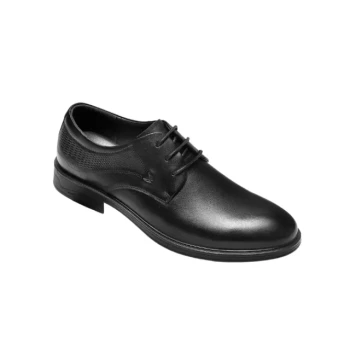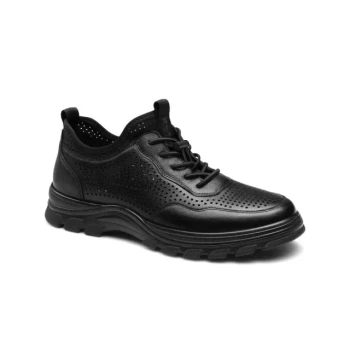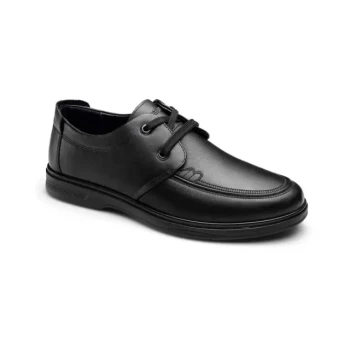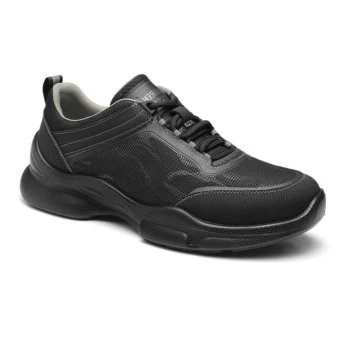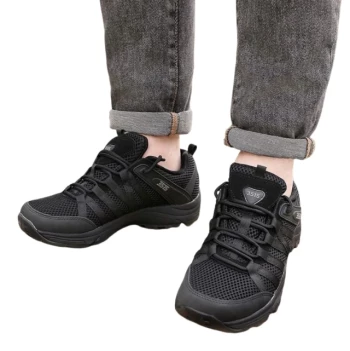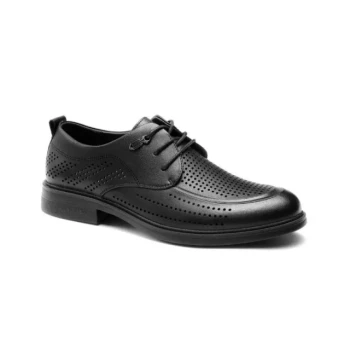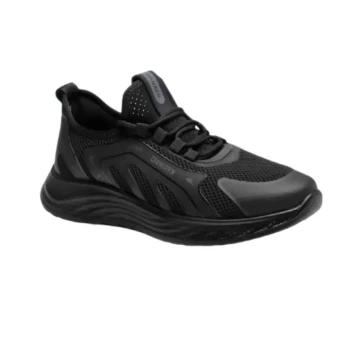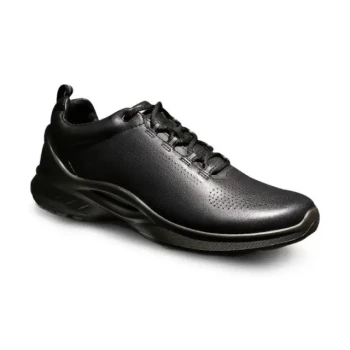In the world of footwear, leather holds a legacy reputation for exceptional durability and comfort due to its unique natural structure. It excels at molding to the wearer's foot, managing moisture, and resisting wear and tear, setting a high benchmark that synthetic and textile materials often aim to replicate through specialized engineering.
The core difference lies in how materials achieve their traits: leather's performance is inherent to its natural, porous fiber structure, while other materials rely on engineered properties that often involve trade-offs between durability, breathability, and flexibility.
Deconstructing "Comfort": More Than Just a Soft Feel
True long-term comfort in a shoe is a function of breathability, fit, and support. A material's ability to manage the environment inside the shoe is just as important as its initial feel.
Breathability and Moisture Management
Leather is a naturally porous material, allowing air and water vapor to pass through. This inherent breathability helps regulate the foot's temperature and allows perspiration to escape, preventing the build-up of odor and moisture.
By contrast, standard synthetic materials like polyurethane ("PU leather") are essentially plastic and are far less breathable. While modern synthetics can incorporate waterproof-breathable membranes, they often don't match the passive airflow of natural leather. Textiles like canvas or mesh are typically highly breathable but offer less protection from the elements.
Malleability and Personalized Fit
One of leather's most prized characteristics is its ability to stretch and mold to the unique shape of your foot over time. This break-in period results in a customized fit that can't be replicated by materials that hold a static shape.
Most synthetic materials lack this malleability, retaining their original form throughout their lifespan. This provides consistent fit from day one but means they will never adapt to your foot's specific contours.
Support and Flexibility
Leather provides an excellent balance of firm structural support and natural flexibility. It holds its shape to support the arch and heel while allowing the forefoot to flex comfortably, a quality that has made it the traditional choice for high-quality dress and work shoes.
The Dimensions of "Durability": It's Not Just About Longevity
Durability is a measure of how well a material withstands stress, abrasion, and time. Here, the construction and grade of the material are critical.
Abrasion and Scuff Resistance
High-quality, full-grain leather possesses a dense fiber structure that is highly resistant to abrasion. While it can scuff, the damage is often superficial and can be treated with polish or conditioner.
Synthetic materials can be very durable, but damage often reveals the underlying fabric layer, and peeling or cracking can occur over time. Textiles are the most susceptible to abrasion and tearing.
The Element of Repairability
A key advantage of leather is its longevity through maintenance. Leather shoes can be cleaned, conditioned, re-polished, and even re-soled by a cobbler, extending their usable life for years or even decades.
When a synthetic or textile shoe is significantly damaged, it is almost always unrepairable and must be replaced.
Understanding the Trade-offs: No Material is Perfect
Choosing the right material requires acknowledging the inherent compromises each one presents. Leather's strengths in durability and comfort come with their own set of considerations.
The Cost and Quality Spectrum
Genuine, high-quality leather is a premium material, and its price reflects that. The market is also filled with lower-grade "genuine leather" or bonded leather, which will not offer the same durability. Synthetics and textiles are generally more affordable.
Water Resistance and Required Care
Unless specifically treated, leather is water-resistant, not waterproof. It can absorb moisture, which can lead to staining or damage if not dried properly. It requires periodic cleaning and conditioning to maintain its suppleness and weather resistance. Many synthetics are inherently waterproof and require minimal care.
The Break-in Period
The same quality that allows leather to create a custom fit—its stiffness—often requires a break-in period. New leather shoes can feel rigid at first, whereas most synthetic and textile shoes are designed for immediate, out-of-the-box comfort.
Making the Right Choice for Your Needs
Your ideal shoe material depends entirely on your priorities and the shoe's intended purpose.
- If your primary focus is maximum longevity and a personalized fit: Choose high-quality leather and be prepared to invest in its initial cost and long-term care.
- If your primary focus is athletic performance, low weight, or guaranteed waterproofing: Modern synthetic materials are specifically engineered for these tasks and will likely outperform leather.
- If your primary focus is casual, lightweight comfort and breathability: Textiles like canvas and mesh offer an excellent and often more affordable option.
Understanding the inherent properties of each material empowers you to select footwear that truly serves its purpose.
Summary Table:
| Material | Key Durability Traits | Key Comfort Traits | Ideal Use Case |
|---|---|---|---|
| Leather | High abrasion resistance; Repairable; Long lifespan | Molds to foot; Breathable; Excellent support | Dress shoes, Work boots, Long-lasting casual wear |
| Synthetics | Good initial durability; Can be waterproof | Lightweight; Immediate comfort; Less breathable | Athletic shoes, Rain boots, Fashion-focused footwear |
| Textiles | Lower abrasion resistance; Less durable | Highly breathable; Lightweight; Flexible | Casual sneakers, Summer shoes, Low-impact activities |
Need Durable, Comfortable Footwear for Your Customers?
As a large-scale manufacturer, 3515 produces a comprehensive range of footwear for distributors, brand owners, and bulk clients. Our production capabilities encompass all types of shoes and boots, from premium leather work boots to high-performance athletic sneakers.
We understand the critical balance between material durability and wearer comfort. Partner with us to develop footwear that meets your exact specifications and market demands.
Contact our team today to discuss your manufacturing needs and get a quote.
Related Products
- Custom Manufactured Air Cushion Leather Business Shoes for Wholesale
- Factory Direct Wholesale Leather Comfort Shoes with Dial Closure
- Wholesale Leather Derby Shoes Manufacturer | Customizable Business & Dress Footwear
- Classic Leather Derby Dress Shoes Wholesale & Custom Manufacturing
- Wholesale Leather Business Casual Shoes with Dial Closure - Manufacturer of Comfort Dress Sneakers
People Also Ask
- What should be considered when choosing sneakers for a business casual office look? Achieve Comfort & Professionalism
- Can trainers/sneakers be worn in a business casual setting? How to Choose the Right Style for a Professional Look
- What are the characteristics of business casual sneakers? Master the Polished & Professional Look
- What are the key features of high-quality leather in shoes? Invest in Durability and a Perfect Fit
- What are the benefits of calf leather for dress shoes? Unmatched Elegance & Comfort
